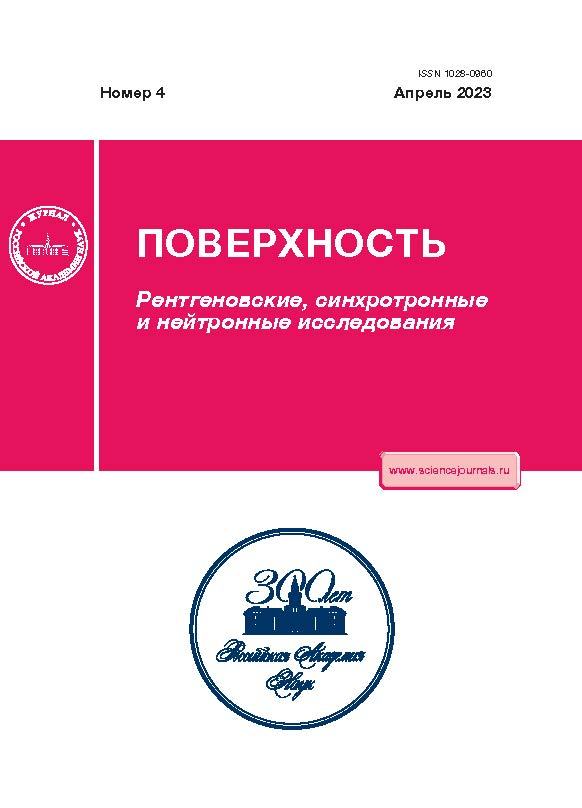Crystallographic Texture and Functional Properties of Powder Titanium Alloys after Thermomechanical Treatment
- Authors: Markova G.V.1, Ivankina T.I.2, Levin D.M.1, Volodko S.S.1
-
Affiliations:
- Tula State University
- Frank Laboratory of Neutron Physics, Joint Institute for Nuclear Research
- Issue: No 4 (2023)
- Pages: 90-96
- Section: Articles
- URL: https://rjmseer.com/1028-0960/article/view/664584
- DOI: https://doi.org/10.31857/S1028096023040131
- EDN: https://elibrary.ru/JPVOBL
- ID: 664584
Cite item
Abstract
A relationship has been established between the crystallographic texture developed during various thermomechanical treatments and the functional properties of titanium-based alloys, in particular, titanium nickelide obtained by sintering calcium hydride powder. Thermomechanical treatment of sintered workpieces was carried out by rotary forging, radial shear rolling, or extrusion. The temperature of the last stage of deformation in all cases was 900°C. The neutron diffraction analysis of the samples was performed on a texture diffractometer SKAT at JINR (Dubna, Russia). The projection plane of the experimental pole figures was perpendicular to the sample axis and the deformation axis. The shape memory characteristics were determined by torsion deformation on wire samples cut from rods along the axis. The texture is most fully demonstrated by the sample after extrusion: the volume fraction of textured grains reaches 85%, and the maximum pole density is 2.76 m.r.d. (multiple of a random distribution). The functional properties under torsion deformation γstr = 2–16% are studied. Extruded samples and samples subjected to radial shear rolling demonstrate the best superelasticity in the austenitic phase γsuperеlast = 15% and maximum values of critical stresses γcr = 15%, starting from which the deformation becomes irreversible. A relationship between the sharpness of the crystallographic texture and the functional properties of the TiNi alloy after thermomechanical treatment has been revealed.
About the authors
G. V. Markova
Tula State University
Author for correspondence.
Email: galv.mark@rambler.ru
Russia, 300012, Tula
T. I. Ivankina
Frank Laboratory of Neutron Physics, Joint Institute for Nuclear Research
Author for correspondence.
Email: iti@jinr.ru
Russia, 141980, Dubna
D. M. Levin
Tula State University
Email: volodko.sv@yandex.ru
Russia, 300012, Tula
S. S. Volodko
Tula State University
Author for correspondence.
Email: volodko.sv@yandex.ru
Russia, 300012, Tula
References
- Bronkhorst C.A., Kalidindi S.R., Anand L. // Textures and Microstructures. 1991. V. 14–18. P. 1031.
- Stanford N., Dunne D.P. // Mater. Sci. Eng. A. 2006. 422. Iss. 1–2. P. 352. https://doi.org/10.1016/j.msea.2006.02.009
- Arabi-Hashemi A., Lee W.J., Leinenbach C. // Mater. Design. 2018. V. 139. P. 258. https://doi.org/10.1016/j.matdes.2017.11.006
- Исаенкова М.Г., Перлович Ю.А., Фесенко В.А., Зарипова М.М. // Челяб. физ.-мат. журн. 2019. Т. 4. Вып. 2. С. 221. https://doi.org/10.24411/2500-0101-2019-14209
- Пушин В.Г., Прокошкин С.Д., Валиев Р.З. и др. Сплавы никелида титана с памятью формы. Ч. 1. Структура, фазовые превращения и свойства. / Ред. Пушин В.Г. Екатеринбург: УРО РАН, 2006. 439 с.
- Yang Y., Zhan J.B., Sun Z.Z. et al. // J. Alloys Compd. 2019. V. 804. P. 220. https://doi.org/10.1016/j.jallcom.2019.06.340
- Liu Y., Xie Z.L., Van Humbeeck J., Delaey L. // Acta Mater. 1999. V. 47. № 2. P. 645. https://doi.org/10.1016/S1359-6454(98)00376-0
- Хачин В.Н. Пушин В.Г., Кондратьев В.В. Никелид титана. Структура и свойства. М.: Наука, 1992. 160 с.
- Касимцев А.В., Левинский Ю.В. Гидридно-кальциевые порошки металлов, интерметалидов, тугоплавких соединений и композиционных материалов. М.: Изд-во МИТХТ, 2012. 247 с.
- Касимцев А.В., Маркова Г.В., Шуйцев А.В. и др. // Изв. вузов. Порошковая металлургия и функциональные покрытия. 2014. № 3. С. 31. https://doi.org/10.17073/1997-308X-2014-3-31-37
- Kasimtsev A.V., Markova G.V., Volodko S.S. et al. // Russ. Metallurgy (Metally). 2020. V. 2020. № 11. P. 1267. https://doi.org/10.1134/S0036029520110087
- Ullemeyer K., Spalthoff P., Heinitz J., Isakov N.N., Nikitin A.N., Weber K. // Nucl. Instrum. Methods Phys. Res. A. 1998. V. 412. № 1. P. 80. https://doi.org/10.1016/S0168-9002(98)00340-4
- Патент № 92 538 (РФ). МПК8 G01N 3/38. Устройство для измерения параметров восстановления формы в материалах / Архангельский С.И., Лабзова Л.В., Маркова Г.В., Чуканов И.В. // Б.И. 2010. № 8.
- Маркова Г.В., Касимцев А.В., Володько С.С., Алимов И.А. // Цветные металлы. 2018. № 12. С. 75. https://doi.org/10.17580/tsm.2018.12.11
- Bunge H.-J. Texture Analysis in Materials Science: Mathematical Methods. London: Butterworth–Heinemann, 1982. 595 p.
- Ivankina T.I., Matthies S. // Phys. Particles Nucl. 2015. V. 46. № 3. P. 366. https://doi.org/10.1134/S1063779615030077
- Shen J., Hu L.P., Zhu T.J., Zhao X.B. // Appl. Phys. Lett. 2011. V. 99. P. 124102. https://doi.org/10.1063/1.3643051
- Yan X., Poudel B., Ma Y. et al. // Nano Lett. 2010. V. 10. P. 3373. https://doi.org/10.1021/nl101156v
- Xie W., He J., Zhu S. et al. // J. Mater. Res. 2011. V. 26. Iss. 15. P. 1791. https://doi.org/10.1557/jmr.2011.170
- Шинаев А.А. Механизм деформации сплавов на основе титана и никелида титана и его влияние на характеристики эффекта запоминания формы: Дис. … канд. тех. наук: 05.02.01. М.: МГАТУ им. К.Э. Циолковского, 1999. 177 с.
Supplementary files
















